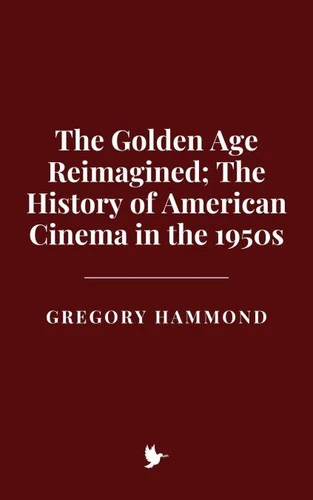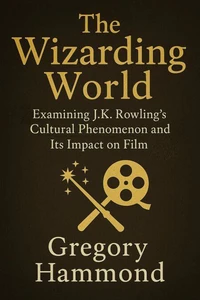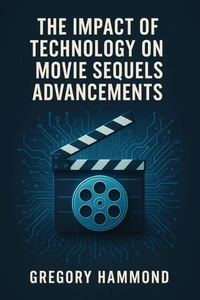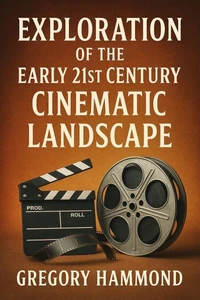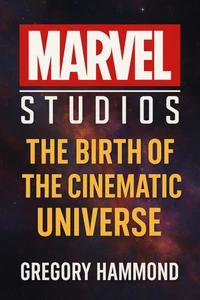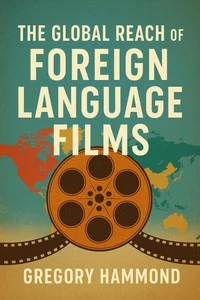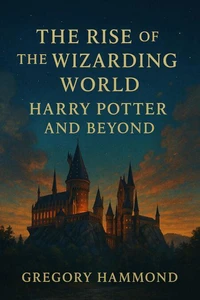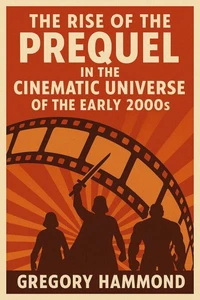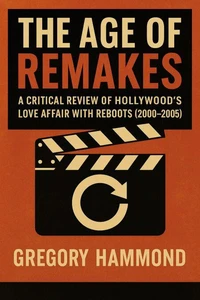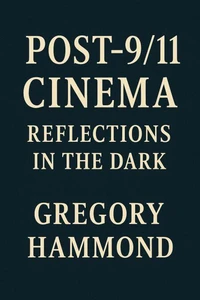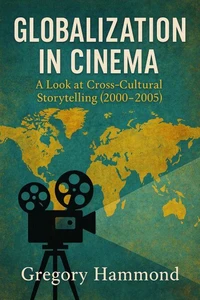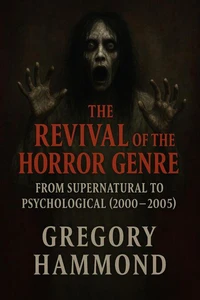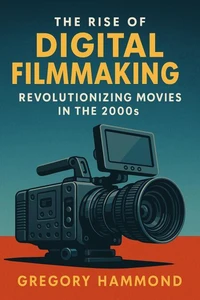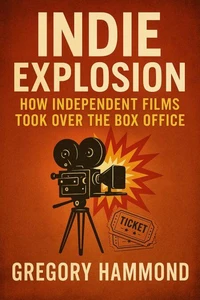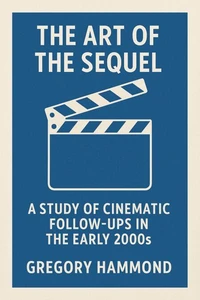The Golden Age Reimagined: The History of American Cinema in the 1950s
Par :Formats :
Disponible dans votre compte client Decitre ou Furet du Nord dès validation de votre commande. Le format ePub est :
- Compatible avec une lecture sur My Vivlio (smartphone, tablette, ordinateur)
- Compatible avec une lecture sur liseuses Vivlio
- Pour les liseuses autres que Vivlio, vous devez utiliser le logiciel Adobe Digital Edition. Non compatible avec la lecture sur les liseuses Kindle, Remarkable et Sony
 , qui est-ce ?
, qui est-ce ?Notre partenaire de plateforme de lecture numérique où vous retrouverez l'ensemble de vos ebooks gratuitement
Pour en savoir plus sur nos ebooks, consultez notre aide en ligne ici
- FormatePub
- ISBN8230976998
- EAN9798230976998
- Date de parution03/02/2025
- Protection num.pas de protection
- Infos supplémentairesepub
- ÉditeurIndependently Published
Résumé
This book delves into the transformative history of American cinema in the 1950s, a decade marked by profound shifts in both the social and cultural landscape and the film industry itself. It traces the decline of the traditional studio system and the rise of new filmmaking methods, offering a comprehensive analysis of the era's cinematic innovations, ideological transformations, and responses to societal upheavals.
The book explores the era's cinematic milestones, from the emergence of blockbuster films and the redefinition of the Western genre to the development of psychological and science fiction horror films. It provides in-depth discussions on the influence of the Hollywood Blacklist, the changing representation of race, gender, and youth, as well as the eventual decline of the Hays Code and the rise of more socially conscious filmmaking.
With a focus on the 1950s' pivotal shifts-from technological advancements like color cinema to the cultivation of independent filmmaking and the growing influence of youth culture-this book offers a nuanced perspective on how American cinema not only reflected but shaped the cultural shifts of its time. Through an analysis of directors, films, and broader cultural trends, it encapsulates the complex interplay between artistic expression and social forces, setting the stage for the creative revolution that would follow in the subsequent decades.
The book explores the era's cinematic milestones, from the emergence of blockbuster films and the redefinition of the Western genre to the development of psychological and science fiction horror films. It provides in-depth discussions on the influence of the Hollywood Blacklist, the changing representation of race, gender, and youth, as well as the eventual decline of the Hays Code and the rise of more socially conscious filmmaking.
With a focus on the 1950s' pivotal shifts-from technological advancements like color cinema to the cultivation of independent filmmaking and the growing influence of youth culture-this book offers a nuanced perspective on how American cinema not only reflected but shaped the cultural shifts of its time. Through an analysis of directors, films, and broader cultural trends, it encapsulates the complex interplay between artistic expression and social forces, setting the stage for the creative revolution that would follow in the subsequent decades.
This book delves into the transformative history of American cinema in the 1950s, a decade marked by profound shifts in both the social and cultural landscape and the film industry itself. It traces the decline of the traditional studio system and the rise of new filmmaking methods, offering a comprehensive analysis of the era's cinematic innovations, ideological transformations, and responses to societal upheavals.
The book explores the era's cinematic milestones, from the emergence of blockbuster films and the redefinition of the Western genre to the development of psychological and science fiction horror films. It provides in-depth discussions on the influence of the Hollywood Blacklist, the changing representation of race, gender, and youth, as well as the eventual decline of the Hays Code and the rise of more socially conscious filmmaking.
With a focus on the 1950s' pivotal shifts-from technological advancements like color cinema to the cultivation of independent filmmaking and the growing influence of youth culture-this book offers a nuanced perspective on how American cinema not only reflected but shaped the cultural shifts of its time. Through an analysis of directors, films, and broader cultural trends, it encapsulates the complex interplay between artistic expression and social forces, setting the stage for the creative revolution that would follow in the subsequent decades.
The book explores the era's cinematic milestones, from the emergence of blockbuster films and the redefinition of the Western genre to the development of psychological and science fiction horror films. It provides in-depth discussions on the influence of the Hollywood Blacklist, the changing representation of race, gender, and youth, as well as the eventual decline of the Hays Code and the rise of more socially conscious filmmaking.
With a focus on the 1950s' pivotal shifts-from technological advancements like color cinema to the cultivation of independent filmmaking and the growing influence of youth culture-this book offers a nuanced perspective on how American cinema not only reflected but shaped the cultural shifts of its time. Through an analysis of directors, films, and broader cultural trends, it encapsulates the complex interplay between artistic expression and social forces, setting the stage for the creative revolution that would follow in the subsequent decades.

